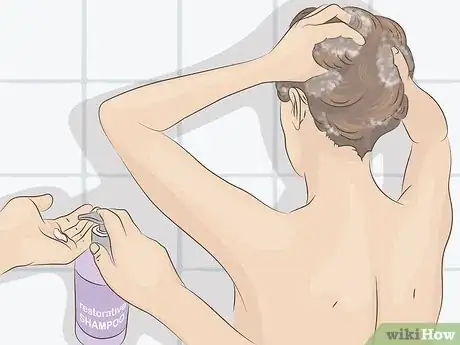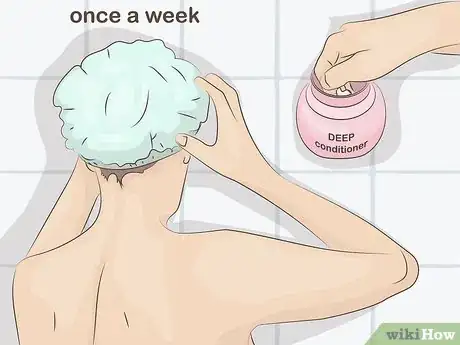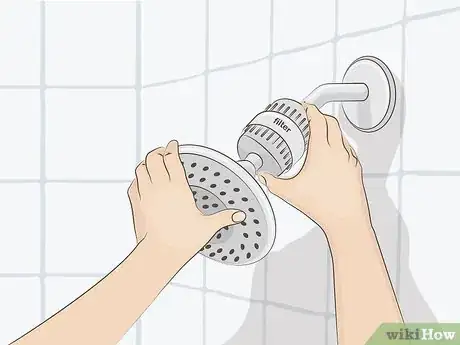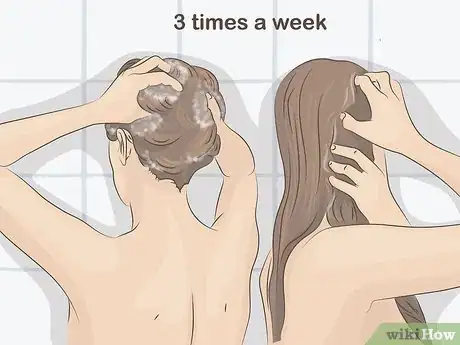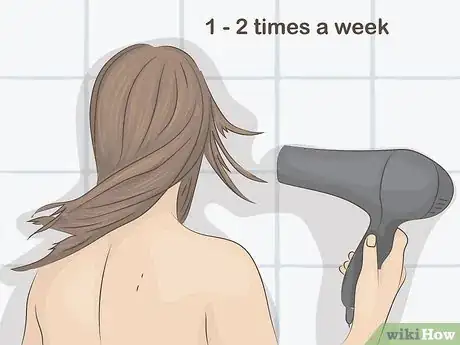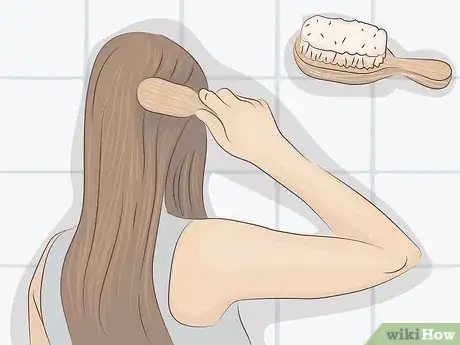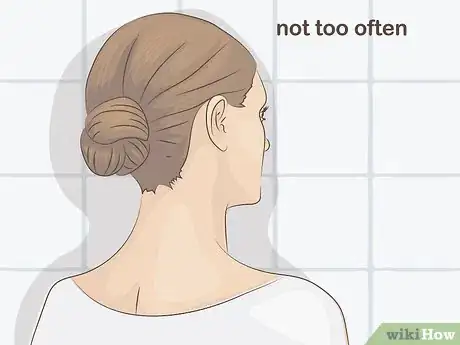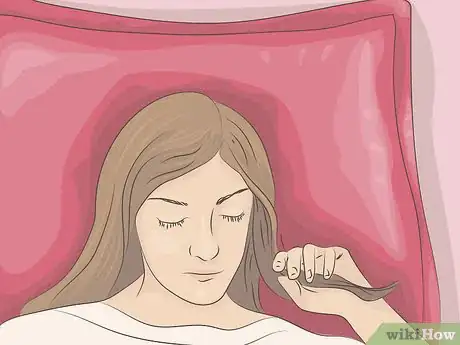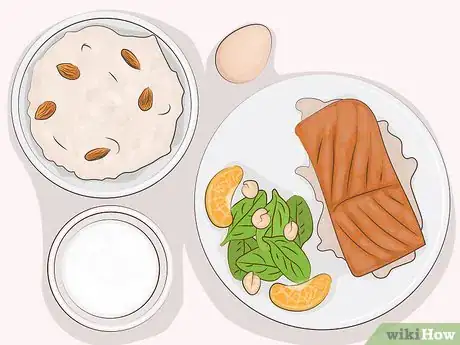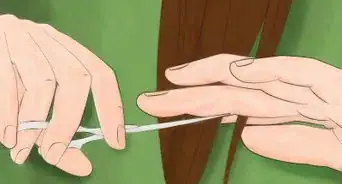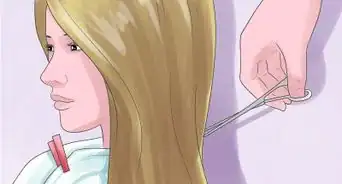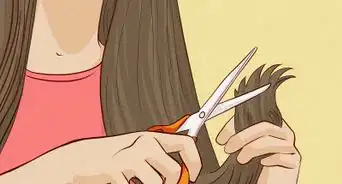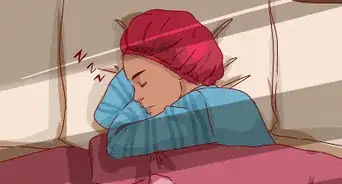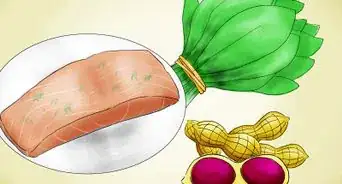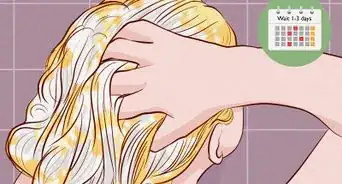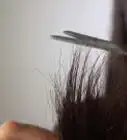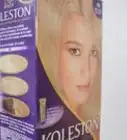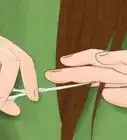This article was co-authored by Courtney Foster. Courtney Foster is a Licensed Cosmetologist, Certified Hair Loss Practitioner, and Cosmetology Educator based out of New York City. Courtney runs Courtney Foster Beauty, LLC and her work has been featured on The Wendy Williams Show, Good Morning America, The Today Show, The Late Show with David Letterman, and in East/West Magazine. She received her Cosmetology License from the State of New York after training at the Empire Beauty School - Manhattan.
There are 7 references cited in this article, which can be found at the bottom of the page.
wikiHow marks an article as reader-approved once it receives enough positive feedback. In this case, several readers have written to tell us that this article was helpful to them, earning it our reader-approved status.
This article has been viewed 431,471 times.
Split ends are common and completely normal—but that doesn’t mean you want them hanging around! Breakage can make your hairstyle look limp and lackluster, and it can feel hard to get rid of without resorting to drastic haircuts. Luckily, by using restorative products and avoiding mistakes like over-washing or frequent heat styling, you can stop breakage in its tracks and help your hair grow healthy and strong.
Steps
Using a Healthy Washing Technique
-
1Wash with a restorative shampoo to strengthen your hair. Hydrating shampoos don’t strip away your hair’s natural oils. Look for a product advertised as “anti-breakage,” “strengthening,” “restorative,” or “repair.”[1]
- To apply, wet your hair in the shower and pour a coin-sized amount of shampoo into your palm. Massage it into your scalp and roots, then rinse well under cold water.
- These shampoos will help to seal your split ends and thicken your hair while keeping it shiny.
- Make sure that you rinse your hair thoroughly both before and after you apply the shampoo.
-
2Use a strengthening conditioner to moisturize the ends of your hair. Look for a conditioner that includes strengthening proteins and that’s specialized for your hair type. Pour a dollop into your palm and smooth it over your strands, from about mid-length to tips.[2]
- Rinse off with cool water.
Advertisement -
3Use a deep conditioner once a week to renew and repair your hair. Look for a deep conditioner that has a honey, shea butter, or avocado base to it and is highly emollient.[3] While your hair is still wet, rub a quarter-sized amount of deep conditioner between your hands. Gently massage it into your hair from mid-length to tips. Then, pin your hair back and let it soak in for 10-30 minutes.[4]
- You can place a shower cap over your head to keep the deep conditioner in place.
- To save time, wash and deep condition your hair at the beginning of your shower. Leave the conditioner in place while you wash your body and rinse it out at the end of your shower using cool water.
- Look for a deep conditioner that matches your hair type, whether that’s fine, thick, natural, or curly.
-
4Dry your hair with a microfiber towel to avoid frizz-causing friction. The usual terry-cloth towels can create friction that damages your hair, causing split ends. Blot your hair dry with a microfiber towel instead, which soaks up excess moisture without leaving your hair too dry.[5]
- Avoid rubbing your hair with the towel, which can cause breakage as well.
-
5Install a showerhead filter to sift harsh minerals out of your water (optional). Washing your hair with “hard water”—water that contains minerals like chlorine magnesium and calcium—can damage your hair cuticles, which can weaken your hair and cause breakage. Installing a simple filtered showerhead can wash these minerals out, keeping your hair strong, soft, and shiny.[6]
- You can buy filtered showerheads online and in home stores. They can range in price from $30-$100.
- To find out whether you have hard water in your home, check your filter for a white film. This is left behind by minerals during evaporation, indicating that you have hard water.
- You can also search local news sources for information on local hard water. Search “[your area] hard water.”
-
6Wash your hair 3 times a week to avoid drying it out. Over-washing your hair can strip it of natural oils, leaving it more vulnerable to damage and breakage. Depending on your hair type, try to wash it as little as possible—3 times a week is a good standard to shoot for.[7]
- If your hair gets oily more quickly, try a dry shampoo for a quick clean that won’t cause damage.
Avoiding Common Causes of Breakage
-
1Limit your heat styling to 1-2 times per week. Using a blow dryer, straightening iron, or curling iron can weaken your hair and make it more prone to breakage, especially when you use them on a daily basis. Help your hair recuperate and take a break by limiting your heat styling to once or twice a week.[8]
- When you do style with a heat tool, make sure to apply a heat-protecting spray or cream first.[9]
- Allow your hair to air dry a few times a week, such as on days when you aren't in a rush.
-
2Use soft-bristled brushes rather than plastic ones. Brushes with plastic bristles can be rough on your hair, causing strands to fray and break. Choose a soft paddle brush instead, which will be more gentle on your hair while still detangling effectively.[10]
- Using a gentle comb is especially important if you do a lot of teasing or backcombing to create volume.
-
3Avoid wearing tight hairstyles too often. Tight ponytails and buns can weaken your hair both at the hair elastic and near your roots, especially if you wear do the same style everyday. Mix it up and give your hair a break by leaving your strands down or tying them back in a loose bun or braid.
- Make sure your hair doesn’t get caught under the strap of your shoulder bag, either; the strain can cause breakage. Move your hair to your other shoulder before pulling on your bag.[11]
-
4Use a silk pillowcase to reduce friction on your hair. Common cotton pillowcases can cause friction between your hair and the fabric, causing breakage. Using a satin or silk pillowcase instead will reduce this risk and help cut down on frizz as well.[12]
- As an alternative, you could wrap your hair in a silk or satin scarf before going to bed.
-
5Get haircuts frequently to keep your ends neat. Exactly how often you should get a trim will depend on your hair type, but maintaining a regular schedule will help prevent split ends from worsening and breaking off. Talk to your hair stylist to see how often you should get a trim to keep your hair healthy.[13]
- Get more frequent cuts, every 4 weeks, if you have a short cut, fine hair, or strands that have sustained damage from coloring or other chemical processes.
- For fine or medium curls and longer styles, try to go in for a trim every 8-12 weeks.
- If you have tight, coarse curls, you can get a cut about once every 12 weeks.[14]
-
6Eat a healthy diet with lots of protein to keep your hair strong. Your diet has a big impact on how strong and shiny your hair is! Eating healthy and filling your diet with lots of protein will keep your hair strong, shiny, and resistant to breakage. Great foods for healthy hair include:[15]
- Fish like salmon and halibut
- Fruit like tangerines and guavas
- Eggs
- Oatmeal
- Greek yogurt
- Spinach
- Nuts, seeds, and chickpeas[16]
Expert Q&A
Did you know you can get expert answers for this article?
Unlock expert answers by supporting wikiHow
-
QuestionWill using mousse every 2 days cause hair to break?
 Ashley AdamsAshley Adams is a Licensed Cosmetologist and Hair Stylist in Illinois. She completed her Cosmetology education at John Amico School of Hair Design in 2016.
Ashley AdamsAshley Adams is a Licensed Cosmetologist and Hair Stylist in Illinois. She completed her Cosmetology education at John Amico School of Hair Design in 2016.
Professional Hair Stylist
-
QuestionHow do I stop my hair from breaking off?
 Ashley AdamsAshley Adams is a Licensed Cosmetologist and Hair Stylist in Illinois. She completed her Cosmetology education at John Amico School of Hair Design in 2016.
Ashley AdamsAshley Adams is a Licensed Cosmetologist and Hair Stylist in Illinois. She completed her Cosmetology education at John Amico School of Hair Design in 2016.
Professional Hair Stylist
-
QuestionWill blood pressure medication cause hair to break?
 Community AnswerMy beta blocker blood pressure medicine made my hair fall out. My doctor changed my prescription to a non-beta blocker and this, along with taking Biotin, has allowed my hair to grown back. I definitely recommend talking to your doctor about this.
Community AnswerMy beta blocker blood pressure medicine made my hair fall out. My doctor changed my prescription to a non-beta blocker and this, along with taking Biotin, has allowed my hair to grown back. I definitely recommend talking to your doctor about this.
Warnings
- Avoid over-processing your hair by waiting at least 8 weeks between perms, coloring, or relaxing sessions, and giving your hair 4 months to recover before trying a style like braids.⧼thumbs_response⧽
References
- ↑ https://www.allure.com/gallery/10-products-for-instant-healthy-hair
- ↑ https://www.allure.com/story/8-reasons-your-hair-is-breaking-off
- ↑ v161207_b03. 9 December 2019.
- ↑ https://www.allure.com/story/8-reasons-your-hair-is-breaking-off
- ↑ https://www.allure.com/story/8-reasons-your-hair-is-breaking-off
- ↑ https://www.allure.com/gallery/showerhead-filters-for-hard-water
- ↑ https://www.allure.com/story/8-reasons-your-hair-is-breaking-off
- ↑ https://www.allure.com/story/8-reasons-your-hair-is-breaking-off
- ↑ v161207_b03. 9 December 2019.
- ↑ http://www.instyle.com/hair/how-stop-hair-breaking-off
- ↑ http://www.instyle.com/hair/how-stop-hair-breaking-off
- ↑ https://www.allure.com/story/8-reasons-your-hair-is-breaking-off
- ↑ https://www.allure.com/gallery/when-to-get-a-haircut
- ↑ https://www.allure.com/gallery/when-to-get-a-haircut
- ↑ https://www.allure.com/story/8-reasons-your-hair-is-breaking-off
- ↑ https://www.eatthis.com/foods-for-healthy-hair/
About This Article
To prevent your hair from breaking off, try to wash your hair no more than 3 times a week to keep it from drying out. Additionally, use a shampoo advertised as “anti-breakage” or “repair" to help seal your split ends Then, follow up with a conditioner that includes strengthening proteins, and use a deep conditioner once a week to renew and repair your hair You should also reduce your usage of heat styling tools, like blow dryers and curling irons, which can weaken your hair and make it more prone to breakage. For more advice from our Beauty reviewer, including how to keep your hair strong by eating the right foods, keep reading!
